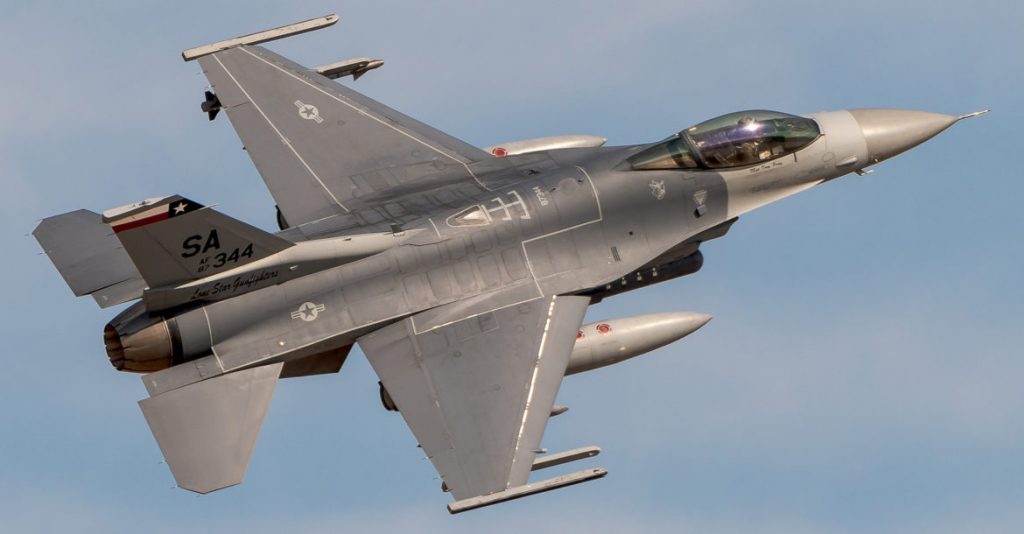Tag Archives: USAircraft
Scalable Agile Beam Radar (SABR) upgrades continue for US Guard, reserve and active-duty fighters
BALTIMORE – Oct. 15, 2020 – The U.S. Air Force has met Full Operational Capability (FOC) readiness for Northrop Grumman Corporation’s (NYSE: NOC) AN/APG-83 SABR active electronically scanned array (AESA) radar on Air National Guard F-16s to meet a U.S. Northern Command Joint Emergent Operational Need (JEON) for homeland defense.
On Sept. 7, the U.S. Air Force began installation of APG-83 radars on Air National Guard F-16s at Joe Foss Field, Sioux Falls, South Dakota, the fourth U.S. Air Force base to receive AN/APG-83 SABR AESA radar upgrades.

The radar upgrade of Air National Guard F-16s extends the operational viability and reliability of the fleet while providing pilots with 5th-generation fighter radar capabilities to defend our nation’s airspace.
“SABR enables F-16 pilots to detect, track, identify and target a greater number of threats faster and at longer ranges from outside the threat envelope,” said Mark Rossi, director, SABR programs, Northrop Grumman. “This upgrade will keep the multirole F-16 fighter relevant and capable for decades to come.”

The AN/APG-83 features all-weather, high-resolution synthetic aperture radar mapping to present the pilot with a large surface image for more precise target identification and strike compared to legacy systems. Its design incorporates proven hardware and advanced operating modes from Northrop Grumman’s fifth-generation F-35 and F-22 AESA radars. The high degree of commonality and shared manufacturing processes and infrastructure drives efficiencies and affordability improvements across all of Northrop Grumman’s AESA radar programs.
The AN/APG-83 AESA is now an official program of record for both the active and reserve U.S. Air Force as well as the Guard after the service procured units in February for Air Combat Command and Air Force Reserve F-16 aircraft.

Northrop Grumman solves the toughest problems in space, aeronautics, defense and cyberspace to meet the ever evolving needs of our customers worldwide. Our 90,000 employees define possible every day using science, technology and engineering to create and deliver advanced systems, products and services.
When NASA sent A U2 Spy plane to South Africa!
Pietersburg now known as Polokwane in the Limpopo Province, An advance team from the American space agency NASA and the first of seven research planes arrived at the Pietersburg International Airport in preparation for the SAFARI 2000 science initiative to monitor the earth’s environment and atmosphere.
Airport corporate relations the then manager Howard Khosa said the Washington University Convair 580 transport plane that arrived, is expected to be joined by two more hi-tech research planes on that week the aircraft took part in the survey and the famous cold war U2 spy plane,was also part of the survey fleet of aircraft.

The NASA U2 Spy planes also made a series of low level passes at the then DEXSA International Airshow at Waterkloof in that very same year of 2000.
Safari 2000 used the U2, officially the ER2 high-altitude surveillance aircraft, as its main tool to monitor the relationships between antopogenic (the influence of topography on atmospheric conditions), physical and biological processes that create the land and atmospheric systems of the sub-continent.
The study is intended to set international scientific standards for measuring atmospheric pollution, global warming and ecological processes and will include the ecology of the Kruger National Park and cloud physics off the Namibian coast.

The NASA programme is was Pietersburg’s first big commercial project since the airport was commercialised in a 50-year, R5-billion concession to a Malaysian consortium.
There was also a C-141B Starlifter as additional support aircraft. But it and the KC-135R returned to the States the following day.


